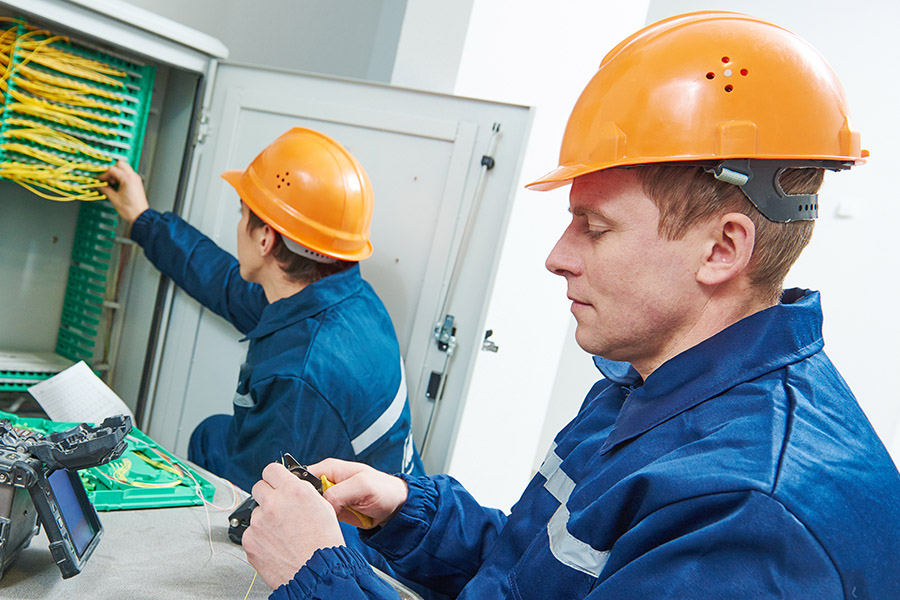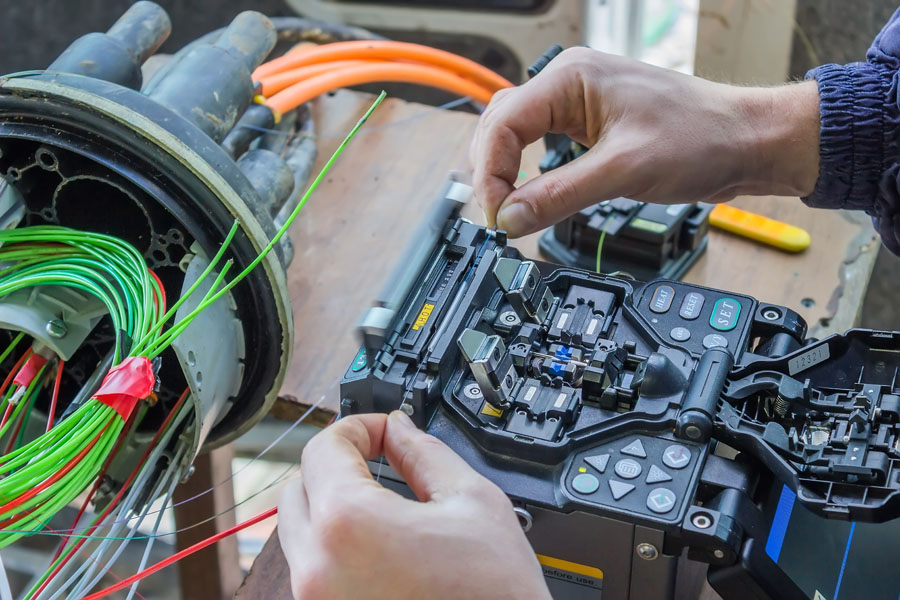Fibre Optic Installation Services
FDE offer a full range of fibre optic cabling services from design and procurement all the way through to termination and testing. We have over 20 years of experience in deploying both single-mode and multi-mode fibre infrastructures in a wide range of environments and networks.
FDE has a thorough approach and is focused on maintaining high service levels throughout all project stages. As a result, you can expect an installation that is reliable, scalable and future-proof.


What We Offer
- Free survey, consultation and design of fibre optic network
- Fibre cable installation and termination
- Fibre containment solutions
- Fibre fusion splicing
- ODTR / Fluke / DSX testing
- Fibre optic network inspection, repair and support
More Information
Single-mode fibre
This is the thinnest variety of fibre optic cabling with a fibre core diameter between 8.3 and 10 microns (usually 9 microns). The speed at which single-mode cables can transfer data is lower than multi-mode cables but they can be used in much longer cable runs of up to 5km.
Multi-mode fibre
Multi-mode cables have a fibre core diameter of between 50 and 62 microns and can accommodate more than one light mode. As a result their data transfer rate capacity is significantly higher than sngle-mode. This means a much faster network with a higher bandwith. However typically they can only be used in cable runs of up to 550 meters.
Summary
Single-mode and multi-mode fibre-optic installations each have their own uses and are preferable in different situations. During our site survey we will assess your requirements and advise you on the most suitable approach.
Advantages
- Speed - can tranfer data at up to 10 Gigabits per second - far quicker than copper
- Bandwith - can accomodate a much higher volume of data at one time - up to 1000 times more than copper
- Distance - can be run at far greater distances without the need to use data boosters
- Future proofing - easier to scale up and is more likely to accomodate future network upgrades
- Reliability - much less prone to interference and data loss due to other electrical sources
- Security - it is almost impossible to 'tap into' the data streams of fibre cables while it is fairly straightfoward to do so with copper cables
Disadvantages
- Cost - although costs are falling, both the equipment and labour in fibre optic installations tend to be higher than copper
- More difficult to splice - fusion splicing of fibre optic cables requires specialised equipment and skills
- Cables cannot curve - fibre optic cables are not able to curve much. This can add a degree of complexity to installations
- Less resilient - fibre optic cables are less resilient than copper and are more prone to damage during the installation phase (e.g. fall damage)
FDE offers a turnkey service for fibre optic installation. Our typical project lifecycle includes:
- Free site survey
- Free consultation on specifications and design of installation
- Specifying costs on labour and equipment and agreeing on timescales
- Documentation and sharing of risk assessments (if applicable)
- Project delivery phase
- Testing and certifying installation
- Aftercare and support phase
